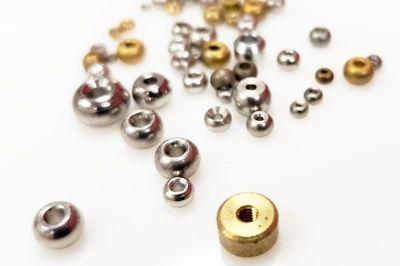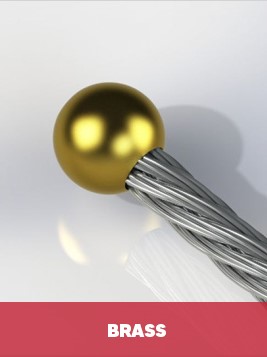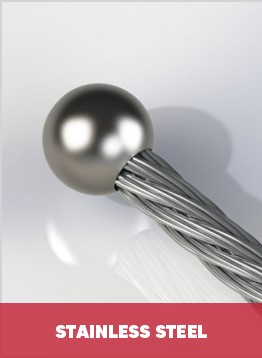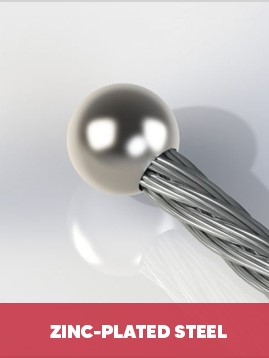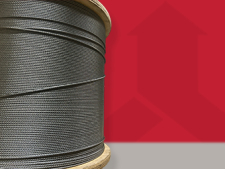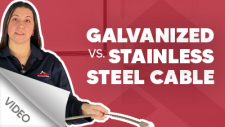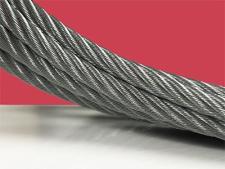Among the most common mechanical cable assemblies on earth comprises a ball fitting swaged to a length of cable. This cable assembly configuration is found in virtually any area of daily life, including, for instance, how we robotically adjust the side mirrors on our car doors, or how surgeons adjust the end effectors of the world’s newest surgical robots. In simplest terms, mechanical cable assemblies made up of a single ball fitting and a length of cable are found everywhere.
And one would think that because of the ubiquitous and proven nature of this prized mechanical cable assembly, it would be easy to produce.
It isn’t.
Even as simple as this cable assembly is in appearance, applying the requisite forces to the ball during swaging, as well as how force is applied both coalesce to determine the integrity of the cable assembly.
In this article, we will discuss how to properly swage a ball fitting to a mechanical cable without damage to the assembly’s strength, as well as the geometry, and chemical integrity of the fitting itself.
Browse Sava's Expertly Crafted Ball Fittings
Our premium ball fittings are designed for strength, durability, and corrosion resistance
What is a Cable Ball Fitting?
A ball fitting is a cylindrically-shaped mechanical cable component that, in the small, miniature, and ultrafine cable categories, is commonly made from alloys like brass, stainless steel, and zinc-plated steel. Ball fittings are round in geometry and contain a thru-hole that is used to feed a length of mechanical cable into its mating position when preparing the ball to be swaged to the cable with a mechanical press.
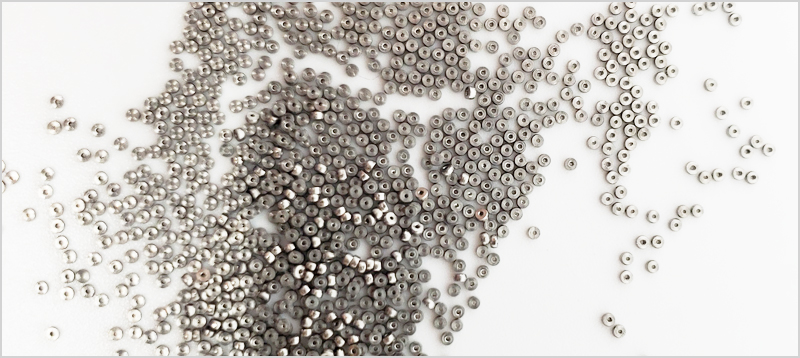

Common Ball Fitting Materials
As mentioned, in small cable manufacturing, ball fittings are typically produced using brass, stainless steel, or zinc-plated steel. The chemical composition of these ball fittings informs, in part, their strength and their resistance to corrosive environmental conditions such as those containing dust, moisture, and heat. Understanding the advantages and disadvantages of each ball fitting material will determine the durability and longevity of the entire cable assembly.
Citing the chart below, note that each of these ball fitting materials presents both plusses and minuses.


| Ball Material | Chemical Composition | Holding Strength | Corrosion-Resistance |
|---|---|---|---|
| Brass | Copper (70%), Zinc (30%) | Good | Good |
| Stainless Steel | Iron (72%), Chromium (18%), Nickel (8%) | Excellent | Excellent |
| Zinc-Plated Steel | Iron (98%), Zinc (2%) | Good | Good |
Brass Ball Fittings
Brass ball fittings are produced using copper and zinc, which makes them adequately corrosion-resistant. But because brass ball fittings do not contain chromium, which stainless steel ball fittings do, they are less resistant to corrosion than their stainless steel counterpart. The presence of chromium in stainless steel ball fittings forms a shield made of oxide that protects the underlying metal from being corroded by hostile environmental factors. Therefore, brass ball fittings do not enjoy the added protective benefits of stainless steel ball fittings.
However, brass ball fittings do possess good strength and ductility, which means they are strong, yet easily swaged to the required diameter and break strength when applied to cable. Another consideration when evaluating brass ball fitting is their biocompatibility. Due to their copper content, which is a known allergen, brass ball fittings are also less biocompatible than stainless steel. This means that brass ball fittings are not ideal in applications where human tissue may encounter this type of fitting. What’s more, the zinc present in brass ball fittings can seep out over time, which can then interact with surrounding biological material as well.
Where cosmetics are an important design consideration, brass ball fittings shine – literally! Brass possesses a naturally luminous appearance; so, if cost is a concern, combined with aesthetics, and biocompatibility is not an issue, brass ball fittings are an excellent choice in ball cable terminations.
Stainless Steel Ball Fittings
In the miniature mechanical cable assembly market, MedTech applications like endoscopic instruments and the increasingly prevalent surgical robots prefer to use stainless steel ball fittings.
Because, as mentioned above, stainless steel contains chromium, stainless steel ball fittings are more corrosion-resistant than brass. The thin layer of oxide, which is a self-healing element, adds additional protection again dust, moisture, and other particulates that would corrode other ball fittings more quickly.
Therefore, stainless steel ball fittings are more expensive than brass ball fittings, given their enhanced corrosion resistance and strength. Speaking of strength, stainless steel ball fittings are stronger than brass alternatives due also to their chromium content. Chromium forms a strong bond with the iron contained in stainless steel ball fittings, and because chromium itself is an incredibly strong material, the pairing of the stainless steel, and its chromium additive, yields it superior strength and corrosion resistance when compared directly to brass ball fittings. Additionally, stainless steel is generally heat treated, which lends even more strength to the fitting. Finally, unlike the natural patina that will form on brass, stainless steel ball fittings will not experience this tarnishing over time, as will brass. This means that stainless steel ball fittings will, again thanks to their chromium content, stay lustrous like they just rolled off the assembly line -- even years from their date of deployment.
Although more expensive, stainless steel ball fittings are superior to brass for these reasons, making them the ideal go-to ball fitting for MedTech applications, as well as those that require more strength, durability, and corrosion resistance than other ball fitting options.
Zinc-Plated Ball Fittings
Zinc-plated ball fittings strike a balance between cost considerations, strength, and corrosion resistance. Less expensive than stainless steel ball fittings, but more expensive than brass, the zinc coating applied to these steel balls provides a critical layer of protection from outside environmental hazards, while maintaining exceptional strength and attractive cosmetics.
Stronger than brass ball fittings, but not true compared with stainless steel, zinc-plated ball fittings do not contain chromium, which is largely where stainless steel ball fittings acquire their superior strength. However, zinc-plated ball fittings are lighter weight than stainless steel, which lends advantages to the application where mitigating system and/or component weight is a priority.
Concerning corrosion resistance, when zinc-plated ball fittings are exposed to water, a process known as galvanic corrosion occurs. Zinc will corrode preferentially over the steel beneath the coating, which means the ball’s steel base will be protected, while the zinc plating does the work of protecting the ball fitting from hostile environments. As zinc oxidizes, it forms a protective layer, ensuring the steel remains unharmed by the fitting’s surroundings. The zinc essentially plays the role of a spoiler because it sacrifices itself for the protection of the steel underneath the coating. This makes zinc-plated steel ball fittings well-suited to applications where harsh conditions may be present.
Passivation Improves Corrosion Resistance
But a cautionary warning: the zinc plating applied to a steel ball fitting is only a few micrometers in diameter, making this ball fitting less protectant than stainless steel ball fittings. As a matter of fact, an incorrectly pressed zinc-plated ball fitting can result in damage to the fragile zinc stratum of protection. When this happens, the entire cable assembly is put at risk of failure due to the ball’s exposure to hostile conditions that are no longer protected by an unblemished sheet of zinc coating.
Oftentimes, a manufacturing operation known as passivation is undertaken to increase the corrosion and fatigue resistance of a mechanical cable assembly. The process of passivating the assembly involves, among several steps, dipping the cable assembly in a passivation solution typically comprising nitric or citric acid. The acids remove the free iron present on the surface of the cable and ultimately forms a thin coating of chromium oxide. The addition of oxide on the surface of the entire cable assembly improves both its resistance to harmful corrosive elements, while also increasing its fatigue resistance. The oxide also improves the cable assembly’s surface finish as well.
But even with its strength, and corrosion resistance, zinc is less biocompatible than stainless steel, which means that when zinc contacts biological materials, like living tissue, for instance, an allergic reaction may follow. So, zinc-plated ball fittings are an ideal option where biocompatibility, along with superior corrosion, and fatigue resistance are not application imperatives.
How to Swage a Ball Fitting to a Cable
Once you’ve established the proper material type for your ball end cable termination, the ball is ready to be swaged to the length of cable.
The ball fitting is swaged to the cable using a mechanical press and mechanical die, the latter of which is specially designed for the assembly in question. The die is installed and positioned on the press and the press operator nests the ball fitting into the die’s cavity to complete the swaging (or pressing) operation. From there, the press operator strikes the ball fitting with predefined force until the ball fitting achieves the diameter and strength the assembly’s application requires.
Can I Swage a Ball Fitting with a Hand Tool?
No, you cannot use a hand tool to swage a ball fitting to a length of mechanical cable. Even in ultrafine diameter cables, made of wires smaller than human hair, with relatively infinitesimal ball fittings, one would require an industrial press.
The issue is that stainless steel and zinc-plated steel ball fittings are too hard to press by hand. The sheer forces required of human hands to both adequately press the ball to the cable, and reduce the ball’s diameter to the required tolerance, would be impossible to achieve with human strength.
Note in the chart below that the difference in force achieved with human hands is dramatic, compared with a machine press.
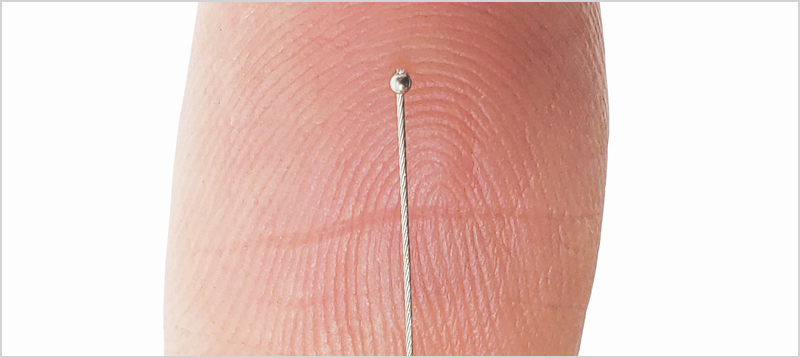

Comparison of Force Exerted: Human Hand vs. Industrial Press
| Force | Human Hand | Industrial Press |
|---|---|---|
| Pounds Per Square Inch (PSI) | 150 | 10,000 |
| Newtons Per Square Meter (N/m^2) | 1.034 kN/m^2 | 68.95 kN/m^2 |
Remember that the swaging process of ball fittings achieves two manufacturing operations:
- Swaging affixes the ball fitting to the cable in such a way that the cable assembly’s full-rated breaking strength is transmitted evenly across the entire cable assembly.
- Swaging is meant to reduce the ball’s size to the exact tolerance (i.e., dimensions) required of the system in which it will be deployed.
Noting that the ball fitting is a different diameter pre-swaged, means it must achieve an application-ready diameter post-swage, lest it fail to either or both fit into the larger system and/or break due to an inadequate hold between mating components.
Is Swaging a Ball Fitting Similar to Hand-Pressing a Crimp Sleeve?
It may be tempting to liken swaging a ball fitting to a cable with crimping a crimp sleeve to a cable.
But the two are entirely different manual manufacturing propositions.
A crimp sleeve, also known as a loop sleeve or ferrule, is an ovular-shaped mechanical cable fitting that allows a single cable to pass through the fitting twice to form an end loop, or entirely differently, pair two cables together.
Firstly, the deformation a crimp sleeve undergoes when applied to a cable using either an industrial press, or a hand tool, is natural and does not automatically damage the integrity of the crimp sleeve, or the newly made cable assembly. Conversely, any compromise to the geometry of a ball fitting, caused by a press or by hands, will almost definitely damage the ball fitting, the cable assembly, or both.
Furthermore, stainless steel crimp sleeves, like steel ball fittings, also require an industrial press for the very same reason: steel’s hardness. When it’s a steel fitting, human hands just cannot summon the requisite forces required to yield a passible hold between the crimp sleeve (or ball) fitting and the cable.
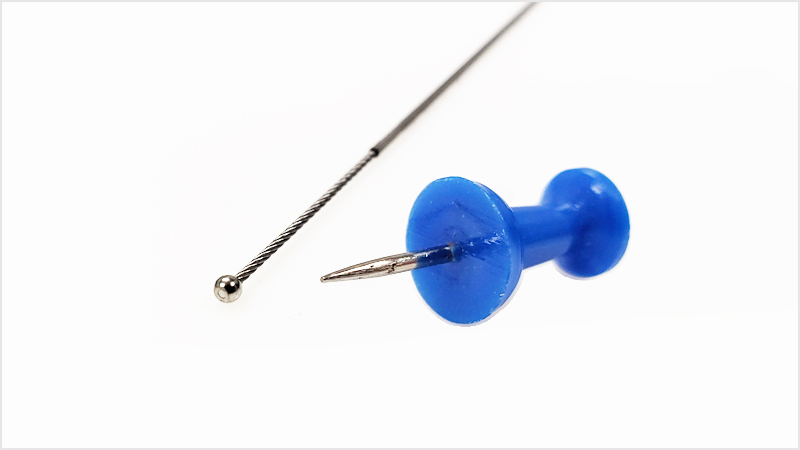

Ask an Expert
It’s best to ask your cable experts how to produce your cable assemblies, in general. Typically, mechanical cable assemblies perform a mission-critical motion control role. Any failure caused by improper swaging operations can be catastrophic in nature. And among cable assemblies used to make surgery go smoother, and reduce complications and hospitalizations, the risks only grow exponentially.
Consult the cable engineers at Sava to be sure your ball fittings are both the most ideal material and assembled with your preferred cable soundly each time, every time.

